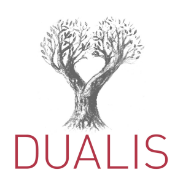How we helped young women and men at risk in 2022
With an everchanging and unstable reality filtering life, the definition of circumstances of risk and distress had to be broadened; nowadays it seems that you’ll find individuals at risk and distress wherever there’s an imbalance of power. That should explain the peak in teens and young adults who are at risk or in situations of distress. Luckily, the general public’s opinion has allowed for this flexibility.
Following suit, national systems who are supposed to provide for vulnerable populations are offering more services. But like every national system, it has to work very hard to gain the trust of those it serves and it can’t reach everyone.
Dualis assists those who are known to welfare services. In other, words, young women and men who are motivated to progress and will use all the tools they can acquire.
In 2022, 492 young adults (18-26yo) were referred to Dualis. They represent the diversity of Israel’s population:
• Women
• LGBTQIA
• Geographic periphery
• Olim Hadashim (new immigrants)
• Arabs
• Haredi’s
• Ethiopians
• Bedouin’s
• Those from out-of-home frameworks
• Those ex-communicated from religious groups
The array of identities exemplifies the reach of at risk and distress circumstance, to almost every corner of society. Not for nothing, it shows how easily young adults can find themselves in these situations.
Dualis sees no difference in the need for employment, between a haredi man or an Arab woman.
Thanks to this parity, 237 of those referred to us started the accompaniment process, and 158 started working!
50% of them retain their position for 3-6 months, for some of them it’s the first time to hold a job.
This also reflects the impact of our Dual Accompaniment model.
Who are the young adults we promote?
Average age of job seekers is 23 yo.
About 66% have prior work experience that wasn’t a positive experience in an inclusive environment.
In fact, 1/3 of them say their past work experience had negative effects on them.
For the remaining 33% this is their first time integrating into employment.
Where do they live?
Majority of participants (65%) live in between Hadera (north) and Gedera (south),
20% live in the south and about 15% in Jerusalem.
What’s their education level?
42% graduated high school without a diploma or equivalent.
37% graduated with a high school diploma or equivalent.
13% haven’t completed high school education.
8% have either a BA or vocational diploma


